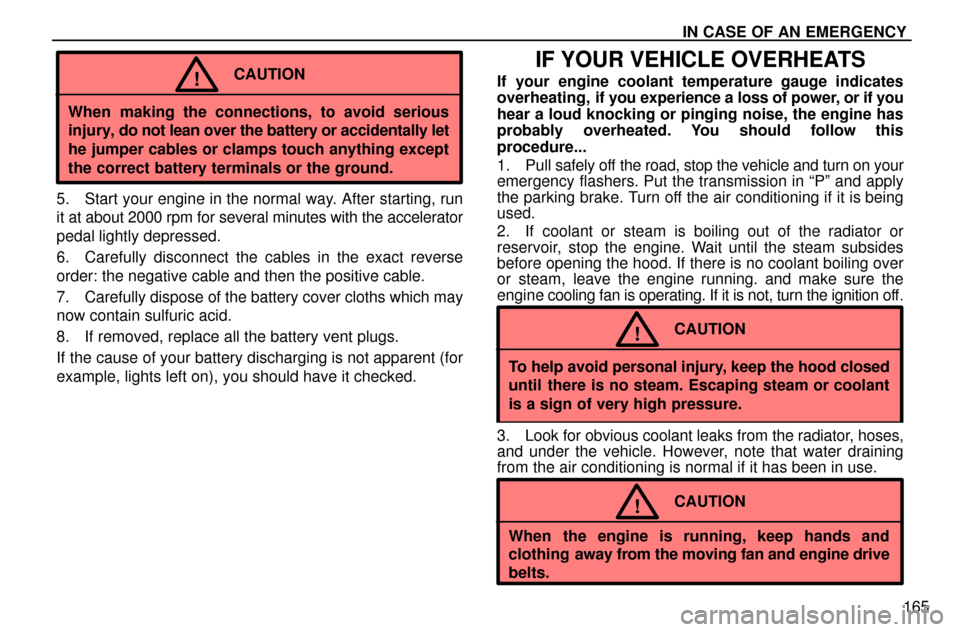IN CASE OF AN EMERGENCY
165
CAUTION!
When making the connections, to avoid serious
injury, do not lean over the battery or accidentally let
he jumper cables or clamps touch anything except
the correct battery terminals or the ground.
5. Start your engine in the normal way. After starting, run
it at about 2000 rpm for several minutes with the accelerator
pedal lightly depressed.
6. Carefully disconnect the cables in the exact reverse
order: the negative cable and then the positive cable.
7. Carefully dispose of the battery cover cloths which may
now contain sulfuric acid.
8. If removed, replace all the battery vent plugs.
If the cause of your battery discharging is not apparent (for
example, lights left on), you should have it checked.
IF YOUR VEHICLE OVERHEATS
If your engine coolant temperature gauge indicates
overheating, if you experience a loss of power, or if you
hear a loud knocking or pinging noise, the engine has
probably overheated. You should follow this
procedure...
1. Pull safely off the road, stop the vehicle and turn on your
emergency flashers. Put the transmission in ªPº and apply
the parking brake. Turn off the air conditioning if it is being
used.
2. If coolant or steam is boiling out of the radiator or
reservoir, stop the engine. Wait until the steam subsides
before opening the hood. If there is no coolant boiling over
or steam, leave the engine running. and make sure the
engine cooling fan is operating. If it is not, turn the ignition off
.
CAUTION!
To help avoid personal injury, keep the hood closed
until there is no steam. Escaping steam or coolant
is a sign of very high pressure.
3. Look for obvious coolant leaks from the radiator, hoses,
and under the vehicle. However, note that water draining
from the air conditioning is normal if it has been in use.
CAUTION!
When the engine is running, keep hands and
clothing away from the moving fan and engine drive
belts.
